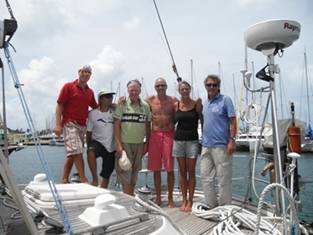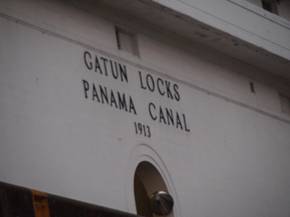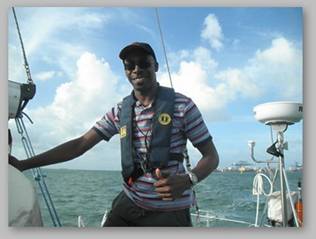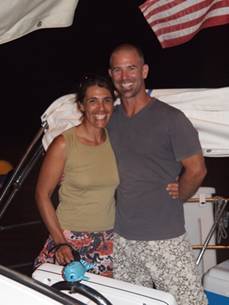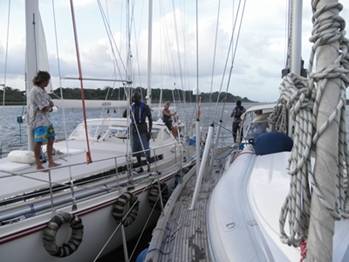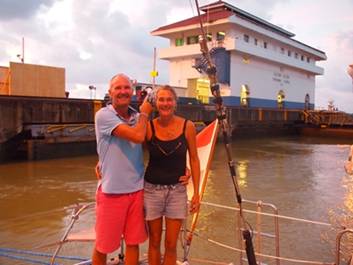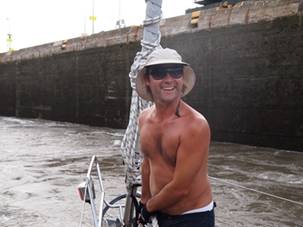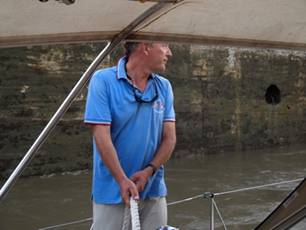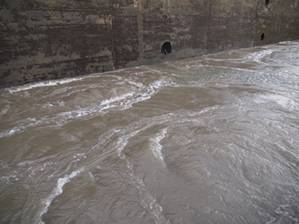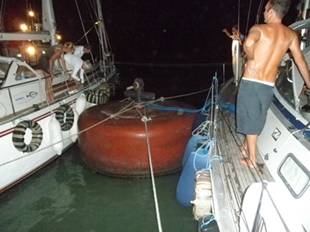Panama Canal Transit: Day one

The first thing we tackled when we arrived on March 10th at Shelter Bay Marina, the marina closest to the Atlantic side entry of the Panama Canal, was our transit through the Panama Canal. We chose the quicker route of having Eric Galvèz, an specialized agent, handle all formalities for us. This included an appointment with the Admeasurer of the ACP (Panama Canal Authorities), getting us as soon as possible on the transit list, and no need for a USD 891,- deposit, which you only get reimbursed once you have transited the Canal without damaging it. Moreover he provided us with the mandatory 4 thick, 36m long mooring lines and not so mandatory, but indispensable 30 car tires to protect Aquamante’s sensitive skin from the “unfinished concrete walls” of the locks, an alarmingly accurate description in one of the pilot guides we use. And in spite of this one is supposed to put up a deposit, because the ACP worries we could damage the locks! Anyway, all of this at a price of some USD 1100,- including his fee of USD 250.-, which is not so bad, if the only alternative is sailing around Cape Horn!
It was a close call for us to have Aquamante ready for the scheduled date, as we were in the midst of a job on the generator, which was not finished until one day before. Postponing our transit was no option, as we would have been added to the end of the waiting list, delaying our transit by at least some 10 days. To add to the excitement of the imminent transit our 4 mooring lines and 29 tires arrived only by noon on the day of our transit, two hours before our departure from Shelter Bay to make it in time for the locks. Luckily our 4 line handlers Carl, Lucas, Scott and Weynand, carefully selected during the previous days on basis of skills, team spirit and fun from the stock of sailors at Shelter Bay Marina, were all in time, and could assist in preparing Aquamante for the transit. Having at least 4 line handlers on board is a requirement by the ACP, and many sailors planning to transit the canal volunteer as line handlers to get some practice before they transit with their own boat. We did the same, helping a couple from Sausalito, CA on board SY Dreamkeeper, whom we met in Shelter Bay Marina transit a week before our own transit.
At 16.45h, only an hour or so after the agreed time, our Advisor is dropped off by a pilot vessel, and we immediately lift anchor to set sail for the three chambers of the Gatun Locks at the Atlantic side of the Canal. These locks, of which each chamber is some 50% larger than the Oranjesluizen of Amsterdam, (but, comforting detail for the Dutch, a third smaller than the Noordersluis connecting the Noordzeekanaal to the North Sea, which was built in 1929 (thank you, Wikipedia)), should bring us to the Gatun Lake, 30 m above sea level. After some hints from skipper and crew of Aquamante and our Advisor suggests to “nest” with SY Abora, an Amel 53 of a German couple with Aquamante as the leading boat, because of her heavier displacement and more powerful engine. “Nesting” means you tie two or three boats alongside each other and cross the locks together.
The other options for smaller boats to transit the Canal are: “center”: in the middle of the lock with 4 lines from port and starboard bow and stern to the boulders on the walls (that’s where the four line handlers come into play); “wall”: directly against the “unfinished concrete wall”, which is rarely done in case of sail boats, as the mast can hit the wall due to the turbulence in the locks; “alongside”: alongside a tug boat or other larger vessel, you simply tie up and enjoy the ride up or down without having to do anything. The only other option, transiting with the aid of 4 to 6 locomotives is reserved for the really big ships. After tying up, and checking whether all the tires of each boat were in the right place, the “nested” couple set off towards the entrance under Aquamante’s motor power, while Vries was responsible for steering the raft. Having two boats tied up alongside makes transits more efficient for the ACP, and has the added advantage that each boat only handles two lines to the walls instead of four. Disadvantage is that you can have very professional line handlers on board, but if the line handlers on the other boat screw up, you suffer the consequences and often even sooner than the other boat. So teamwork with the other crew is essential, and the Advisors on each boat cannot do much about that. Fortunately this went pretty well with our German friends, although the atmosphere seemed a bit tense during the whole process. The opposite was the case on Aquamante: everyone was excited to experience the adventure of a transit and focused on what needed to be done, but very relaxed at the same time, with lots of jokes flying around. Meanwhile Daph frantically sms-ed her brother in law in the Netherlands that we were approaching the locks, so that they could watch our transit on one of the webcams of the ACP. Judging the comments we received afterwards, the quality of this ACP service gets mixed reviews.
Meanwhile Daph dazzled the crew with drinks, snacks, appetizers and a lovely dinner, a great opportunity to celebrate a successful end of the first part of the transit. Whereas we grew louder by the minute, our neighbours of Abora had a rather quiet evening. They chatted in German with their Swiss line handlers, which made their other line handler, a young English guy and friend of our line handler Carl, cross the mooring buoy to join us for after dinner drinks. Since the next Advisor, our guide through the remainder of the Canal to the Pacific, would arrive around 6.00h the next morning, we called it a day, and a momentous one for that matter, sometime after midnight. |
